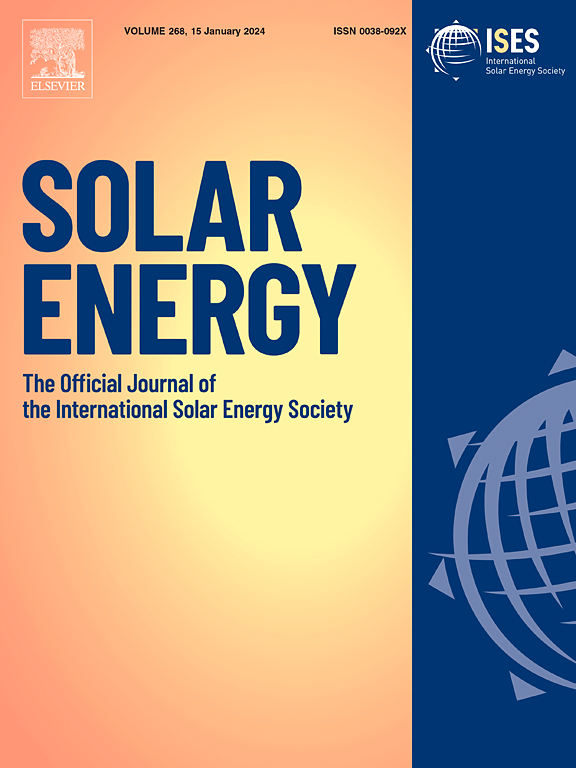Enhanced performance in GaAs-based hybrid solar cells using response surface methodology-optimized moth-eye ETFE coating
IF 6
2区 工程技术
Q2 ENERGY & FUELS
引用次数: 0
Abstract
Light reflection at the surface of solar cells (SCs) significantly limits their efficiency by reducing the amount of incident light available for energy conversion. This study introduces a novel anti-reflective, moisture-resistant ethylene tetrafluoroethylene (ETFE) film with a moth-eye nanostructure as both an encapsulation layer and anti-reflective coating for GaAs-based hybrid solar cells. Employing response surface methodology (RSM) to optimize nanostructural parameters, a minimum average reflectance of 6.7 % across a broad spectrum (300–900 nm) and a peak power conversion efficiency (PCE) of 18.97 % in the simulation were achieved. Fabricated using nanoimprint lithography (NIL), the ETFE film improved the PCE to 14.60 % and enhanced stability, maintaining 79 % of initial efficiency after 7 days in moderate humidity (66 % RH). This dual-functional design addresses both optical and environmental challenges in hybrid solar cells. The preliminary humidity resistance and scalable fabrication suggest its potential, though long-term durability requires further validation.

求助全文
约1分钟内获得全文
求助全文
来源期刊

Solar Energy
工程技术-能源与燃料
CiteScore
13.90
自引率
9.00%
发文量
0
审稿时长
47 days
期刊介绍:
Solar Energy welcomes manuscripts presenting information not previously published in journals on any aspect of solar energy research, development, application, measurement or policy. The term "solar energy" in this context includes the indirect uses such as wind energy and biomass
 求助内容:
求助内容: 应助结果提醒方式:
应助结果提醒方式:


